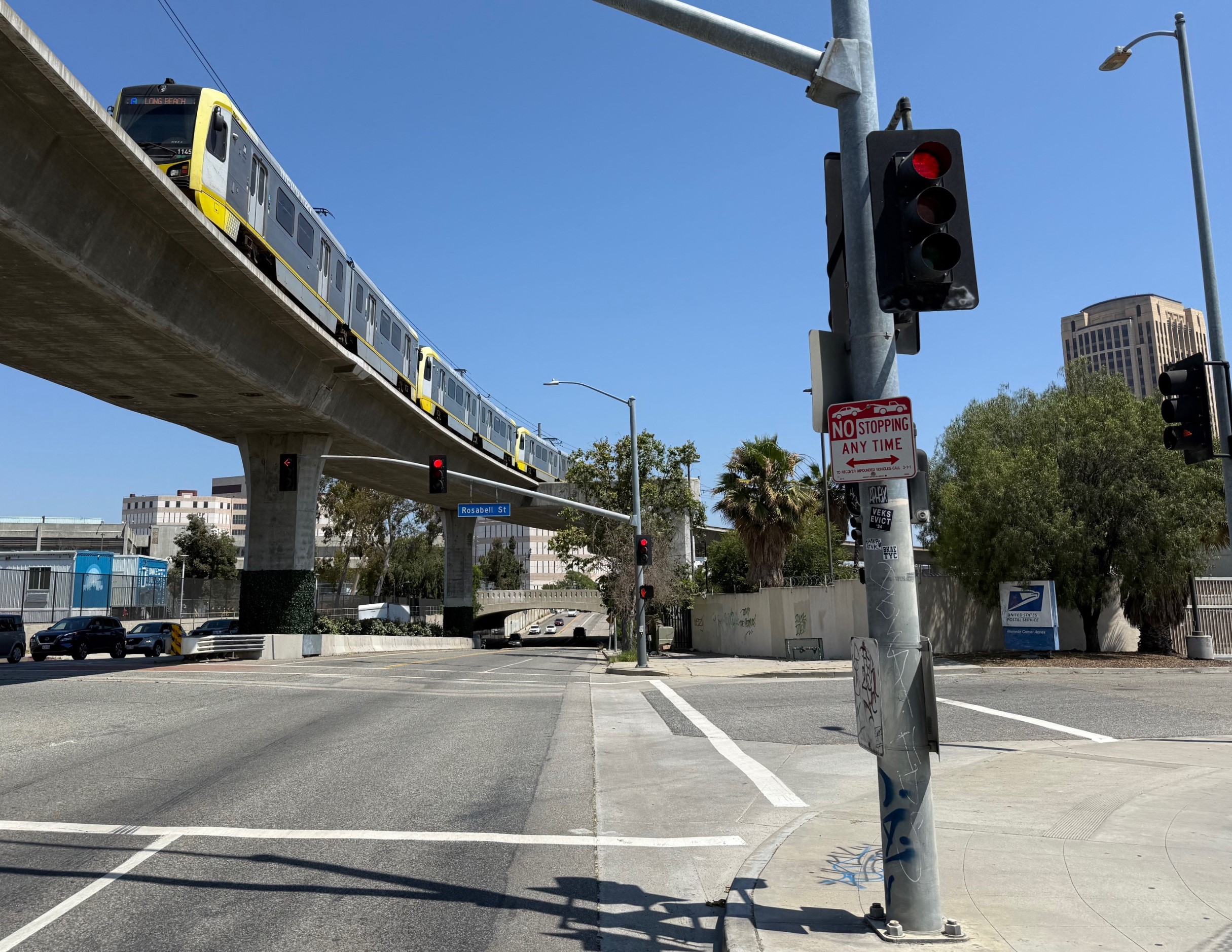
Before the end of this year, the Federal Highway Administration will release its own guidance on designing protected bike lanes.
The agency’s positions on bicycling infrastructure has matured in recent years. Until recently, U.S. DOT’s policy was simple adherence to outdated and stodgy manuals like AASHTO’s Green Book and FHWA’s own Manual on Uniform Traffic Control Devices (MUTCD) -- neither of which included protected bike lanes.
In 2010, the department developed a policy stating that “every transportation agency, including DOT, has the responsibility to improve conditions and opportunities for walking and bicycling and to integrate walking and bicycling into their transportation systems” and that they should “go beyond minimum standards to provide safe and convenient facilities for these modes.” That was the first hint that the agency was looking beyond the Green Book and the MUTCD, which were (let’s face it) the very minimum of standards.
The department’s new strategic plan, released last year, emphasized pedestrian and bicycle safety and highlighted the need to create connected walking and biking networks that work for all ages and abilities, which is also a focus of the secretary’s new bike/ped safety initiative.
Then last year the agency explicitly endorsed “design flexibility,” unshackling engineers from the AASHTO and MUTCD “bibles” and encouraging them to take a look at the National Association of City Transportation Officials' urban bikeway guide and the Institute of Transportation Engineers’ manual on walkability.
Now, with a secretary at the helm who’s determined to make bike and pedestrian safety his signature issue, the agency is going further. First, the next edition of the MUTCD (expected to be released in 2016 or 2017) will have a slew of new signage and markings recommendations for bicycling. FHWA’s Dan Goodman told an audience at Pro-Walk Pro-Bike earlier this month that the updated MUTCD is expected to have everything from signage indicating how bikes should make two-stage turns using bike boxes to stripes extending bike lanes through intersections -- and, of course, guidance on buffered and protected bike lanes.
But perhaps more important than the changes to the MUTCD is the fact that FHWA is publishing its own manual dedicated to the design of protected bike lanes. (Despite the fact that the guide will deal exclusively with bike lanes that are protected from traffic with some kind of vertical barrier -- not just paint -- they still insist on calling the designs “separated” but not “protected” bike lanes, out of recognition of the fact that even what passes for “protection” in the U.S. these days -- like flexible plastic bollards -- don’t offer much protection against a moving car. Streetsblog calls these lanes "protected," however, as a way to distinguish them from regular painted lanes, which are also "separated" from traffic.)

And FHWA is collaborating with exactly the right people on the project. Carl Sundstrom from the UNC Highway Safety Research Center and Ryan Russo of NYC DOT, who presented alongside Goodman at Pro-Walk Pro-Bike, are both consulting on the new guidelines. Sam Schwartz Engineering and Kittelson & Associates, Inc. -- firms which have developed specializations in protected bike lanes -- are on the consultant team. NACTO and ITE are on the technical work group along with the League of American Bicyclists’ Equity Initiative and some forward-looking state DOTs, MPOs, and transit agencies.
The guidelines will discuss the pros and cons of different intersection designs, one- versus two-way lanes, and different types of protection. Sometimes cities prefer two-way lanes to one-way lanes, or using parked cars as buffers instead of concrete, specifically because those treatments create enough width to allow street cleaning equipment to go through. Hot tips like that from experienced cities will fill the guide.
During their presentation, Russo and Sundstrom genially disagreed about whether separated signal phasing or mixing zones were the best way to deal with turning vehicles. Questions like these are still open to debate. It will be interesting to see how Goodman and his colleagues treat them in the manual -- whether they’ll take sides or simply present the options.
In many cases, Goodman said, it's hard to take a definitive stand on these treatments because there’s simply no data backing up one design over another. He and his colleagues weren’t satisfied with the safety analysis they were able to perform because they simply didn’t have good data to work with. “The data is not good enough to draw specific design conclusions,” he said.
Sundstrom, however, said the little before-and-after data they do have is convincing enough to say protected bike lanes improve safety. In Sundstrom’s study of protected bike lanes, total cyclist injuries did go up, but since more people were biking, the crash rate went down on eight out of nine streets. They also saw that crashes at intersections made up 90 percent of the crashes that did occur -- up from 70 percent before the facility was installed -- indicating that intersections are where they need to put their focus.
Russo said they found even more striking results in New York, where crashes with injuries went down 17 percent on streets with protected lanes. Injuries to motor vehicle occupants -- “wonderful beneficiaries to these projects” -- went down 25 percent. And despite the fact that biking in New York has quadrupled since 2000, the total number of crashes is actually down 2 percent, and injuries and fatalities remain flat, making for a 74 percent reduction in crash risk.
The FHWA document will end with a call to action, including a plea for cities to collect before-and-after data when they make changes. But Goodman makes clear that their commitment to promoting protected bike lanes isn’t up for negotiation and that the call to action will urge cities to build them. “One conclusion to draw from our effort is that yes, separated bike lanes are part of the toolbox that you can use to create and connect bike networks,” he said, “and that’s where we’re going.”






